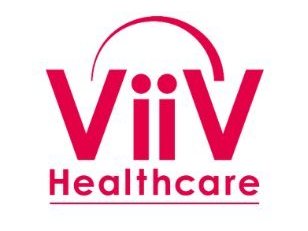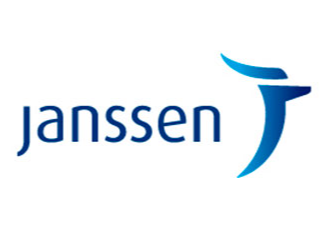
Drug name
Cabotegravir and Rilpivirine
Drug information
Cabotegravir and Rilpivirine
Cabenuva (Cabotegravir and Rilpivirine co-packaged medication) and Vocabria (Cabotegravir) co-administered with Rekambys (Rilpivirine).
Small molecule
Long-acting injectable Cabotegravir and Rilpivirine (CAB/RPV-LA) is a complete treatment regimen for HIV-1 infection consisting of two components: (1) Cabotegravir a HIV-1 integrase strand transfer inhibitor developed by ViiV Healthcare and (2) Rilpivirine a second-generation non-nucleoside reverse transcriptase inhibitor manufactured by Janssen. CAB/RPV-LA is designated for the treatment of HIV-1 infection in virologically suppressed (<50 copies/mL HIV-1 RNA) adults and adolescents aged twelve and over who weigh at least 77 pounds (35 kilograms) receiving a stable antiretroviral regimen with no history of treatment failure or resistance to either rilpivirine and/or cabotegravir.
Cabotegravir and Rilpivirine extended-release injectable suspensions co-packaged as CABENUVA is approved by the USFDA, Health Canada, Australia, UAE and UK. Individually packaged extended-release Cabotegravir (VOCABRIA) and extended-release Rilpivirine (REKAMBYS) are approved in the Argentina, European Union, Botswana, Brazil, Canada, Chile, China, Hong Kong, Israel, Japan, Russia, Singapore, South Africa, South Korea, Taiwan, UAE, and UK for co-administration in the treatment of HIV-1 infection. CAB- RPV LA injectables are awaiting approval in countries such as Colombia, Mexico and Thailand.
CAB and RPV combination has received supplemental NDA approval with an Extended Label from the USFDA, inclusion in the Black Triangle Symbol Scheme by TGA Australia, and European Marketing Authorization by the EMA. This combination is specifically indicated for virologically suppressed adults with HIV-1 infection (HIV-1 RNA <50 copies per millilitre [c/ml]), weighing at least 35 kg. Eligible patients must have previously maintained stability on a treatment regimen without experiencing treatment failure or showing signs of resistance to Rilpivirine/Cabotegravir.
Therapeutic area(s)
- HIV
- Treatment
Administration route
Oral, Subcutaneous, Intramuscular
Associated long-acting platforms
Aqueous drug particle suspension
Use of drug
- Administered by a nurse
- Administered by a specialty health worker
- Self-administered
Not provided
Dosage
Not provided
Not provided
Not provided
Not provided
Not provided
Not provided
Formulations
Compare
Cabotegravir 4-monthly (Q4M)
Cabotegravir Stearate (M2CAB)
Cabotegravir and Rilpivirine
cabotegravir PH20
Associated technologies
Not provided
Comment & Information
Developer(s)

ViiV Healthcare is a pharmaceutical company that specializes in the development of therapies for HIV infection. The company is headquartered in Brentford in the United Kingdom and was initially formed in November 2009 as a part of a joint venture between GlaxoSmithKline and Pfizer.

Janssen Pharmaceuticals is a subsidiary company of Johnson & Johnson headquartered in Beerse, Belgium. They manufacture and develop pharmaceutical products for use in areas such as, Immunology, Infectious Diseases & Vaccines, Pulmonary Hypertension, Cardiovascular & Metabolism, Oncology, and Neuroscience.
ViiV Healthcare(Vocabria) / Janssen-Cilag Ltd (Rekambys)Drug structure
Scale-up and manufacturing prospects
Compounds are commercially manufactured.
Conventional wet-bead milling apparatus (e.g. Netzsch ball mill), depyrogenated glass vials, high pressure homogenizer.
Cabotegravir and Rilpivirine are formulated into a wet-mill suspension of approximately 200mg/ml and 300mg/ml respectively, due to their low aqueous solubility. This formulation results in the creation of nanocrystal drug particles which are amenable for intramuscular gluteal depot injection. The manufacturing process for RPV is considered to be non-standard due to the inclusion of an aseptic processing step. RPV is light-sensitive, and exposure to light can induce conversion into a Z-isomer form which can affect pharmacokinetic data and activity.
PANalytical X’Pert PRO diffractometer equipped with a theta/theta coupled goniometer (or equivalent x-ray powder diffractor), Mettler TGA/DSC 1 instrument for thermal analysis, Laser diffractor (determine particle size), FT-IR UHPLC (chemical identification), UHPLC (chromatographic purity), paddle apparatus & UPLC/UV (determine in-vitro drug release for QC / dissolution testing).
Excipients
No proprietary excipient used
The novel excipient poloxamer 338 (P338) is used in the final G001 Rilpivirine clinical formulation. Following both an in-vitro mammalian chromosome aberration and an Ames test, it was considered to be non-genotoxic with no evidence for mutagenicity. Further P338 fertility, genotoxicity and development studies have been conducted with no negative effects, in addition to a 6-week and 9- month minipig repeat-dose toxicity study. No adverse local or systemic toxicity was reported in the minipigs at 100mg/month (Margin of Exposure:19).
No residual solvent used
Delivery device(s)
No delivery device
Publications
Bares SH, Scarsi KK. A new paradigm for antiretroviral delivery: long-acting cabotegravir and rilpivirine for the treatment and prevention of HIV. Curr Opin HIV AIDS. 2022 Jan 1;17(1):22-31. doi: https://doi.org/10.1097/COH.0000000000000708. PMID: 34871188; PMCID: PMC8694245.
Purpose of review
Cabotegravir (CAB) and rilpivirine (RPV) is the first long-acting injectable antiretroviral therapy (ART) option approved for virologically suppressed adults with HIV-1. In addition, long-acting CAB is a promising agent for HIV preexposure prophylaxis (PrEP). This review focuses on phase 3 clinical trial results and implementation considerations for these long-acting ART and PrEP strategies.
Recent findings
Long-acting CAB and RPV administered every 4 weeks demonstrated noninferiority to oral ART through week 96 in both the ATLAS and FLAIR studies, whereas ATLAS-2M found similar efficacy through 96 weeks when the long-acting injectable ART was administered every 8 weeks instead of every 4 weeks. For prevention, two phase 3 trials were stopped early due to fewer incident HIV infections in participants receiving long-acting CAB every 8 weeks compared with daily oral tenofovir disoproxil fumarate–emtricitabine for PrEP. The long-acting therapies were well tolerated across all clinical trials.
Summary
Clinical trial results support the use of long-acting CAB for HIV PrEP and long-acting CAB and RPV as a switch strategy for adults with HIV-1 who are first virologically suppressed with oral ART. Implementation challenges persist, and data are urgently needed in populations who may benefit most from long-acting therapy, including adolescents, pregnant individuals, and those with barriers to medication adherence.
Additional documents
No documents were uploaded
Collaborate for development
Consider on a case by case basis, collaborating on developing long acting products with potential significant public health impact, especially for low- and middle-income countries (LMICs), utilising the referred to long-acting technology
Share technical information for match-making assessment
Provide necessary technical information to a potential partner, under confidentiality agreement, to enable preliminary assessment of whether specific medicines of public health importance in LMICs might be compatible with the referred to long-acting technology to achieve a public health benefit
Work with MPP to expand access in LMICs
In the event that a product using the referred to long-acting technology is successfully developed, the technology IP holder(s) will work with the Medicines Patent Pool towards putting in place the most appropriate strategy for timely and affordable access in low and middle-income countries, including through licensing